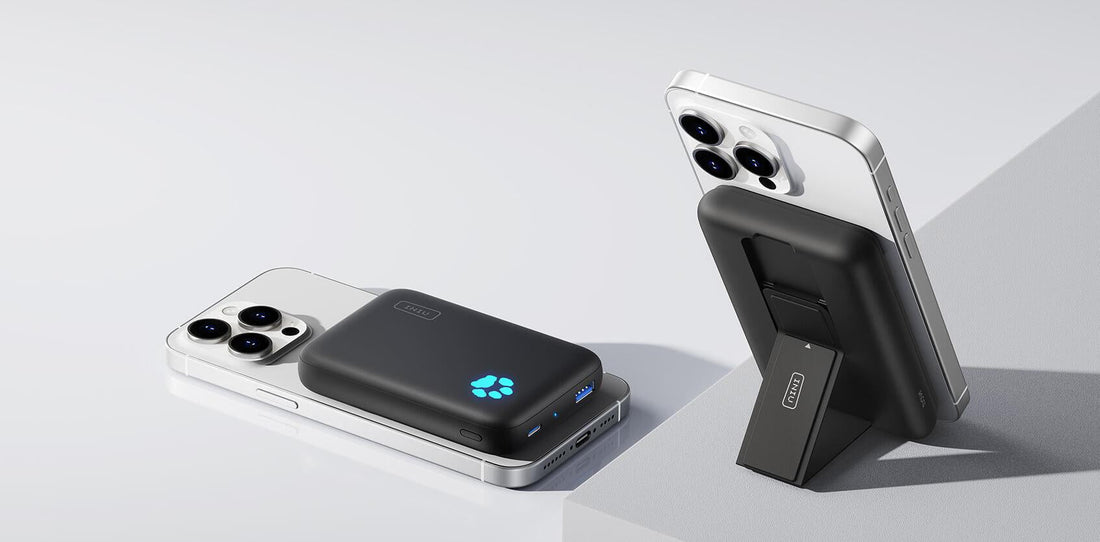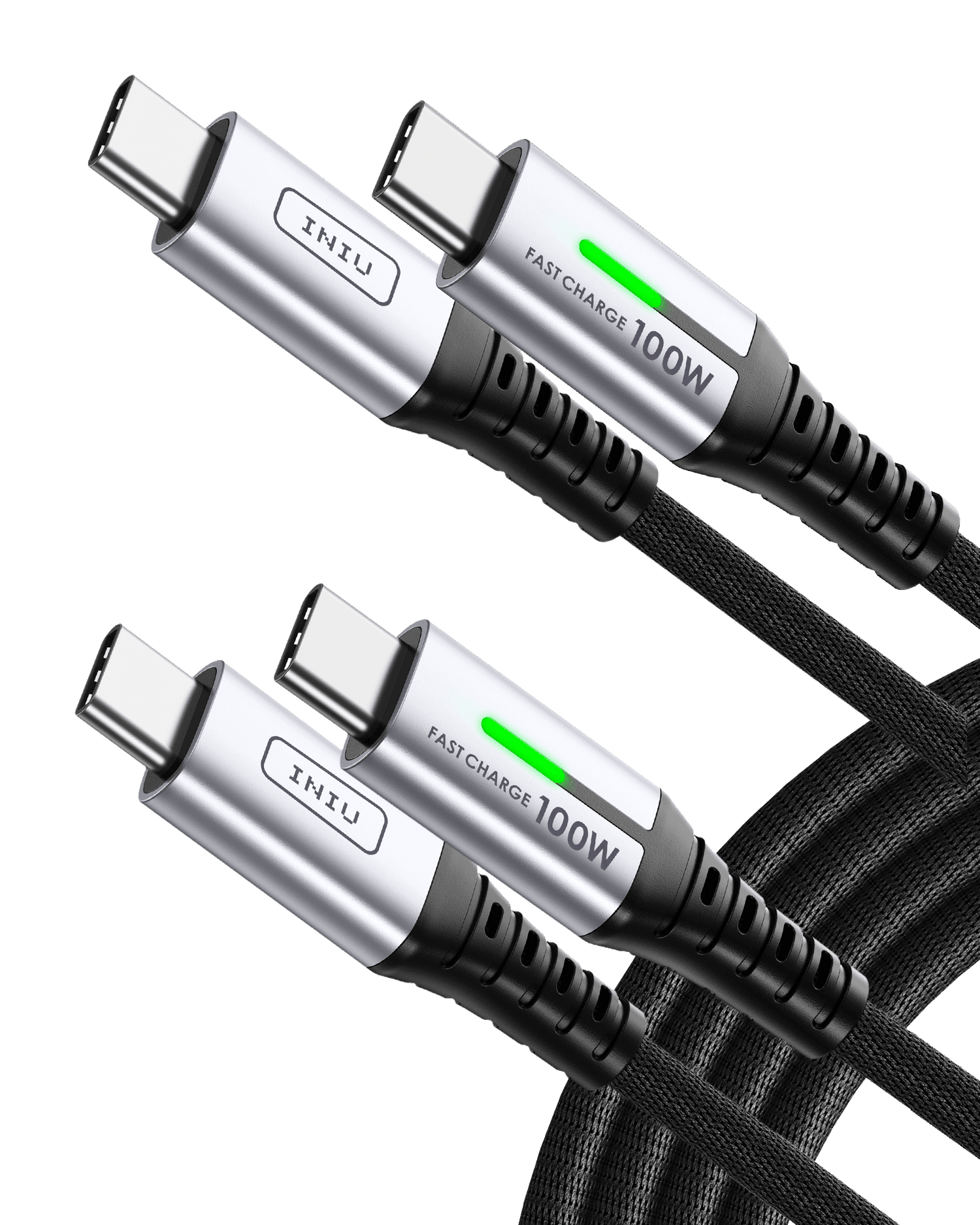
Magnetic Portable Charger vs Regular Power Bank: Which One Fits Your Needs?
Magnetic portable chargers have gained massive popularity thanks to their sleek design, cable-free convenience, and growing compatibility with smartphones. But how do they stack up against the more traditional, tried-and-true regular power banks? This comprehensive guide breaks down the core differences, key technologies, and real-world performance to help you choose the perfect power solution.
What Exactly Is a Magnetic Portable Charger?

A magnetic portable charger is a compact wireless power bank that attaches magnetically to the back of your phone. These chargers usually use the Qi or Qi2 wireless charging standard, and most of the new models offer 7.5W to 15W output. Instead of plugging in, you simply snap the charger onto your phone and go. The key technology behind it is inductive charging—two coils (one in the charger and one in the phone) create an electromagnetic field that transfers energy wirelessly. Therefore, this type of power bank usually needs to be used with magnetic charging accessories.
Some high-end models also incorporate magneto-resonant charging, which improves alignment and reduces energy loss over distance. Safety circuits like overheat protection, overcharge detection, and temperature sensors are also standard in certified models.
How Does It Work Differently from a Regular Power Bank?
The main distinction lies in how power is delivered. Magnetic chargers transfer energy wirelessly, while regular power banks use wired connections.
|
Feature |
Magnetic Portable Charger |
Regular Power Bank |
|
Charging Type |
Wireless (Qi, Qi2, MagSafe) |
Wired (USB-A, USB-C, Lightning) |
|
Connection |
Magnetic alignment to phone |
Cable connection via port |
|
Output Power (Typical) |
5W – 15W (some special models offer higher) |
10W – 140W (PD 3.0, QC 4.0, etc.) |
|
Efficiency |
~60–70% (due to the wireless loss) |
~85–95% |
|
Compatibility |
iPhones 12+ / Android with magnetic ring/case |
All phones, tablets, laptops |
|
Usage While Charging |
One-hand use, no cable hassle |
Requires cable, less convenience |
Is a Magnetic Charger Fast Enough for Daily Use?
Magnetic chargers are convenient, but charging speed is generally slower than wired models. However, it is worth noting that magnetic power banks with Qi 2 certification can provide 15W output, which is close to the standard wired charging speed. Here's what you can expect from different charging methods:
MagSafe output (Apple-certified): Max 15W, depending on device temperature and alignment.
Qi wireless certified: Ranges from 5W (standard) to 15W (fast Qi 2-enabled models).
Wired USB-C PD (Power Delivery): Supports up to 140W, though typical smartphone charging uses 18W–30W, and tablets/laptops use 45W–100W. Many high-power wired output power banks support dynamic power distribution adjustment based on the maximum input power of the device.
Example Charging Time (iPhone 14 Pro Max, about 4300+ mAh battery):
Magnetic charger (rated 15W, real ~10W): ~2.5–3.2 hours for full charge
Wired 20W PD charger: ~50% in 30 minutes, full in ~1.5 hours
Wired 30W–45W PD charger: ~50% in ~25 minutes, full in ~1.1–1.3 hours (limited by device’s max intake)
While magnetic charging is relatively slower, it offers superior convenience for casual daily use—such as charging while walking, video calling, or working—without the hassle of cables.
Are Magnetic Chargers Safe for Your Phone and Battery?

Yes—if certified by organizations like the Wireless Power Consortium (WPC) and following safety standards such as Qi or Qi2.
Safety Features to Look For:
- Qi / Qi2 or MagSafe certification
- Overcurrent and overvoltage protection
- Temperature sensors and automatic shutoff
- Foreign object detection (FOD)
Recent Safety Note: Several low-cost magnetic power banks have been recalled in recent years due to fire risks. Always buy from trusted brands like INIU, Anker, UGREEN, and Belkin.
INIU is Amazon's No. 1 brand in portable chargers. After more than a decade of development, INIU has received widespread praise from consumers around the world. INIU's industry-leading three-year warranty service allows you to shop without worry.
Which One Is More Convenient for On-the-Go Use?
Magnetic portable chargers for Android, iPhone or the other phone brands are ideal for:
- One-hand phone use while walking – No cables needed, stays attached securely while you move
- Traveling light – Slim and pocket-friendly, perfect for minimal setups
- Using navigation or video apps – Keeps the screen visible while charging without being blocked by cables, especially with kickstands
- Commuters and students – Easy to snap on/off during short breaks, fits in backpacks or pockets
Regular power banks are more suitable when:
- Charging laptops or high-power tablets – Higher wattage (45W–100W+) supports larger devices
- Speed is a top priority – Wired PD chargers deliver faster charging with better efficiency
Bonus Tip: Some magnetic chargers feature kickstands, USB-C ports, or LED battery indicators for extra portability and usability on the go—ideal when you need power without digging cables through a bag.
Market Trend: According to recent estimates, the global wireless charger market is valued at $12.5 billion (2024) and could reach $17.3 billion by 2031, growing due to 5G, AI, and increased smartphone use.
How Long Does Each Type of Magnetic Power Bank Last per Full Charge?
|
Capacity |
Usable Output |
Number of Times a Phone is Charged (3000mAh Battery) |
Notes |
|
5000mAh |
~3000–3250mAh |
1 times |
Light, easy to carry |
|
10000mAh |
~7500–8500mAh |
2-3 times |
Higher efficiency |
|
20000mAh |
~13000-17000mAh |
About 4 times |
Ideal for travel or emergencies |
For most mobile phone users who pursue a balance between portability and charging times, a 10000mAh magnetic power bank can usually meet their needs.
What Are the Best Magnetic Portable Chargers You Can Buy Now?
1. INIU P73-E1 Wireless Charger with Stand (Qi2 15W, 10000mAh)
Ultra-thin design: 0.5 in, Market's Slimmest 10K Magnetic Power Bank
Stand Function: Built-in adjustable stand for hands-free viewing while charging.
High Capacity: 10,000mAh battery for extended use.
Qi2 15W Fast Charging: Certified Qi 2 wireless charging for efficient iPhone 12-16 compatibility.
For a charging solution that combines power, portability, and hands-free functionality, learn more about the INIU P73-E1 Wireless Charger with Stand.
Dual Charging: Supports simultaneous fast wired (PD 45W USB-C) and wireless charging.
2. INIU P43-E1 Power Bank (Qi2 15W, 10000mAh)
Enhanced Portability: Compact design with 10,000mAh capacity.
Strong Magnetic Alignment: Secure MagSafe-like attachment for stable charging.
Multi-Device Support: USB-C port (PD 30W Wired Charging) + Qi2 wireless (15W) charging.
Travel-Friendly: Slim profile ideal for on-the-go use.
If portability and powerful charging performance are your top priorities, the INIU P43-E1 Power Bank is the perfect choice for you.
3. INIU P71-E1 Power Bank (Qi2 15W, Slimmest 5000mAh)
Ultra-Slim Design: World's thinnest magnetic power bank (0.35 in).
Lightweight Capacity: 5,000mAh for quick top-ups without bulk.
Qi2 15W Optimization: Full-speed wireless charging for iPhones 12-16.
Pocket-Sized: Attaches seamlessly to phones without adding noticeable weight.
Rapid Recharge: USB-C input refills quickly for reuse.
Experience the freedom of truly weightless power with the INIU P71-E1 Power Bank.
Final Thoughts

Both charger types serve different lifestyles. If you value minimalism, portability, and casual charging, a magnetic portable charger may be the perfect upgrade. On the other hand, for high-speed charging across multiple devices, traditional wired power banks still win on performance.
FAQ: Magnetic vs Regular Power Banks
Q1: What devices work with magnetic portable chargers?
Most magnetic portable chargers work with iPhone 12 or newer models that support MagSafe. Android devices must support Qi wireless charging. And magnetic charging often requires a magnetic case or ring.
Q2: Can I use a magnetic charger with a phone case?
Yes, but the case must be MagSafe-compatible or thin enough not to block the wireless charging coils. Metal or thick cases can cause interference. Please be careful to remove the metal objects in the phone case before magnetic charging.
Q3: How long does it take to charge a phone with a magnetic charger?
Depending on the charger's rated output (7.5W to 15W) and your phone model, it usually takes 1.5–3 hours for a full charge. Real output can be lower due to energy loss.
Q4: Are MagSafe portable chargers safe?
Yes—certified products (Qi, Qi2, or MagSafe) are tested for overheat, short-circuit, and overvoltage protection. Avoid unverified or generic brands.
Q5: What should I do if my charger gets hot?
Stop charging immediately, place the charger on a hard, flat surface, and let it cool. Avoid charging on soft surfaces or near heat sources.
Q6: Can I bring magnetic power banks on a plane?
Yes, in carry-on luggage only. Most airlines limit lithium-ion batteries to below 100Wh (~27,000mAh). Check with your airline and label packages if required.
Q7: What features make a magnetic charger good for travel?
The magnetic power bank does not require cables to charge; just place your phone on it and start charging, allowing you to avoid the trouble of cable entanglement and carrying multiple accessories during travel. The 10000mAh magnetic power bank can charge most mobile phones about 2 times, meeting the power needs of travel.
Q8: Does fast charging harm the battery?
No, if the charger is well-designed with adaptive charging and heat control. Avoid repeated overheating to prolong battery life. At the same time, pay attention to the maintenance of your power bank to extend its life and ensure charging safety.



